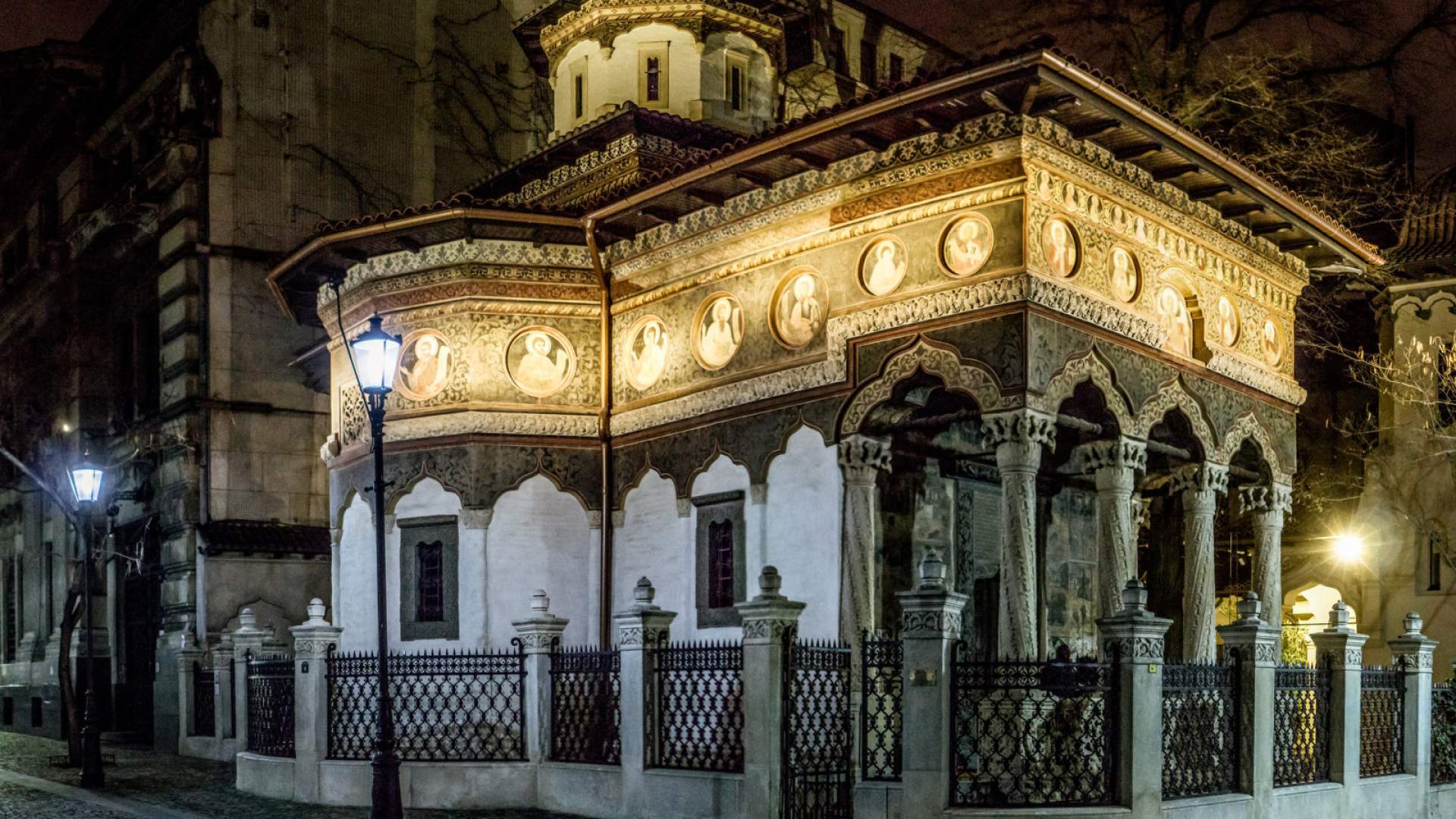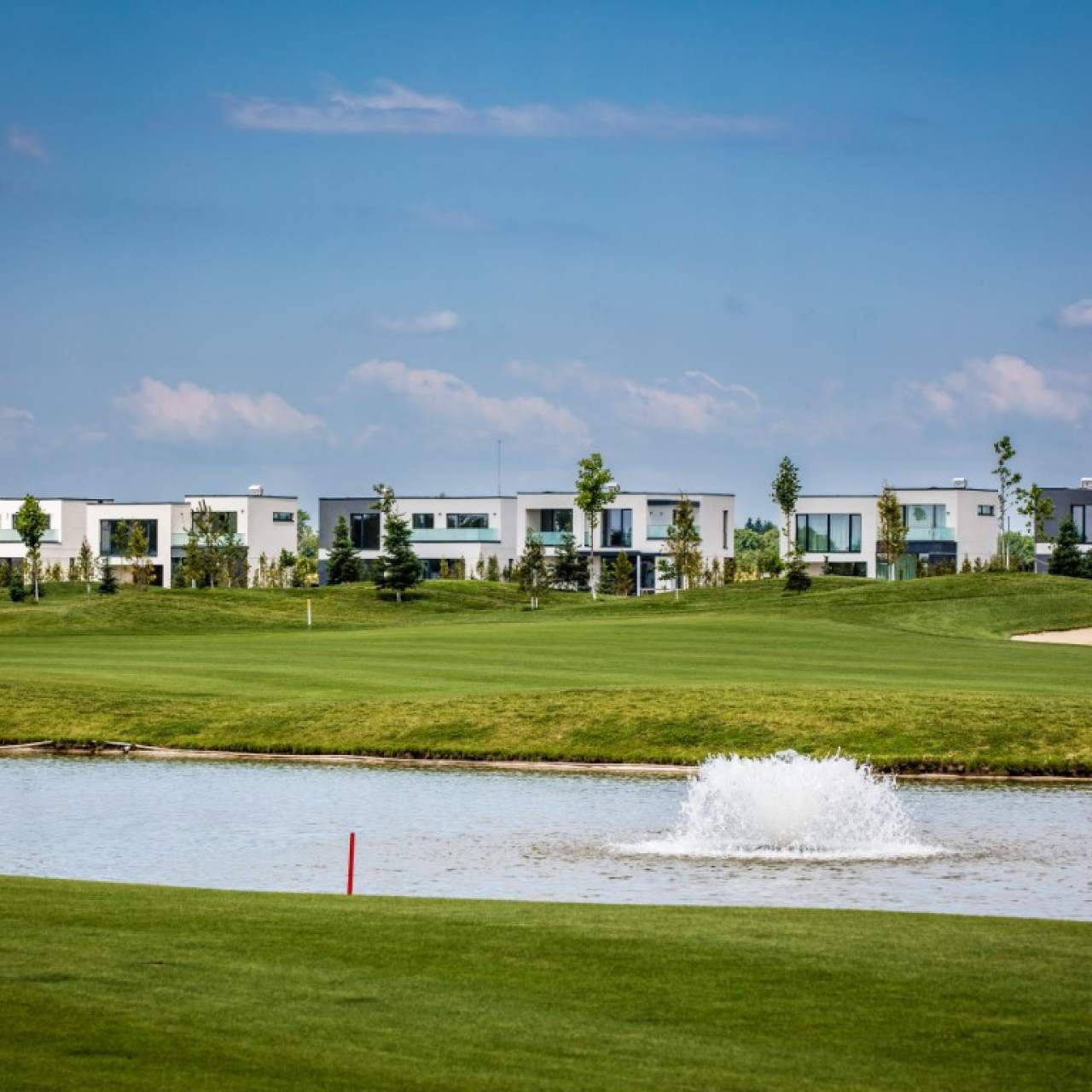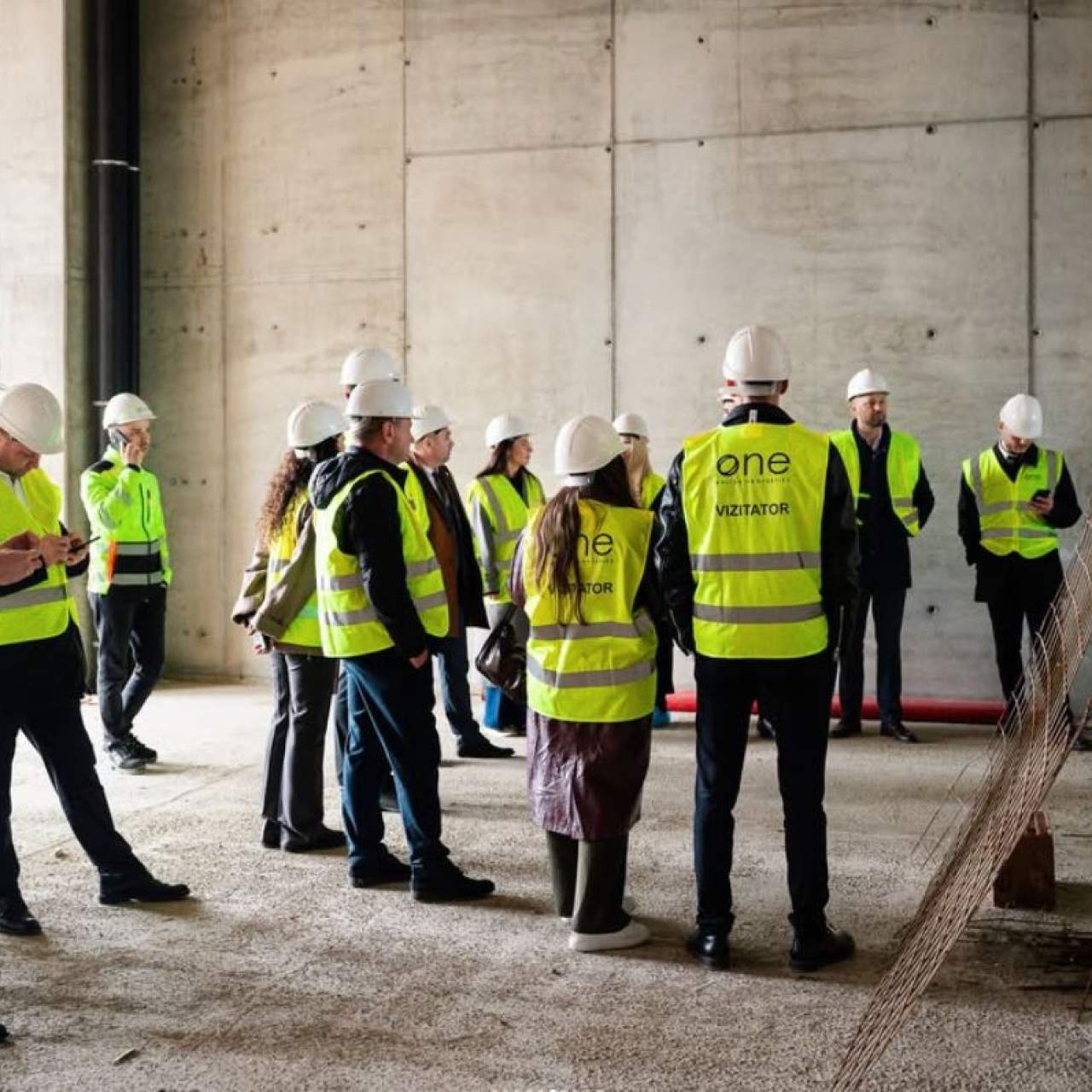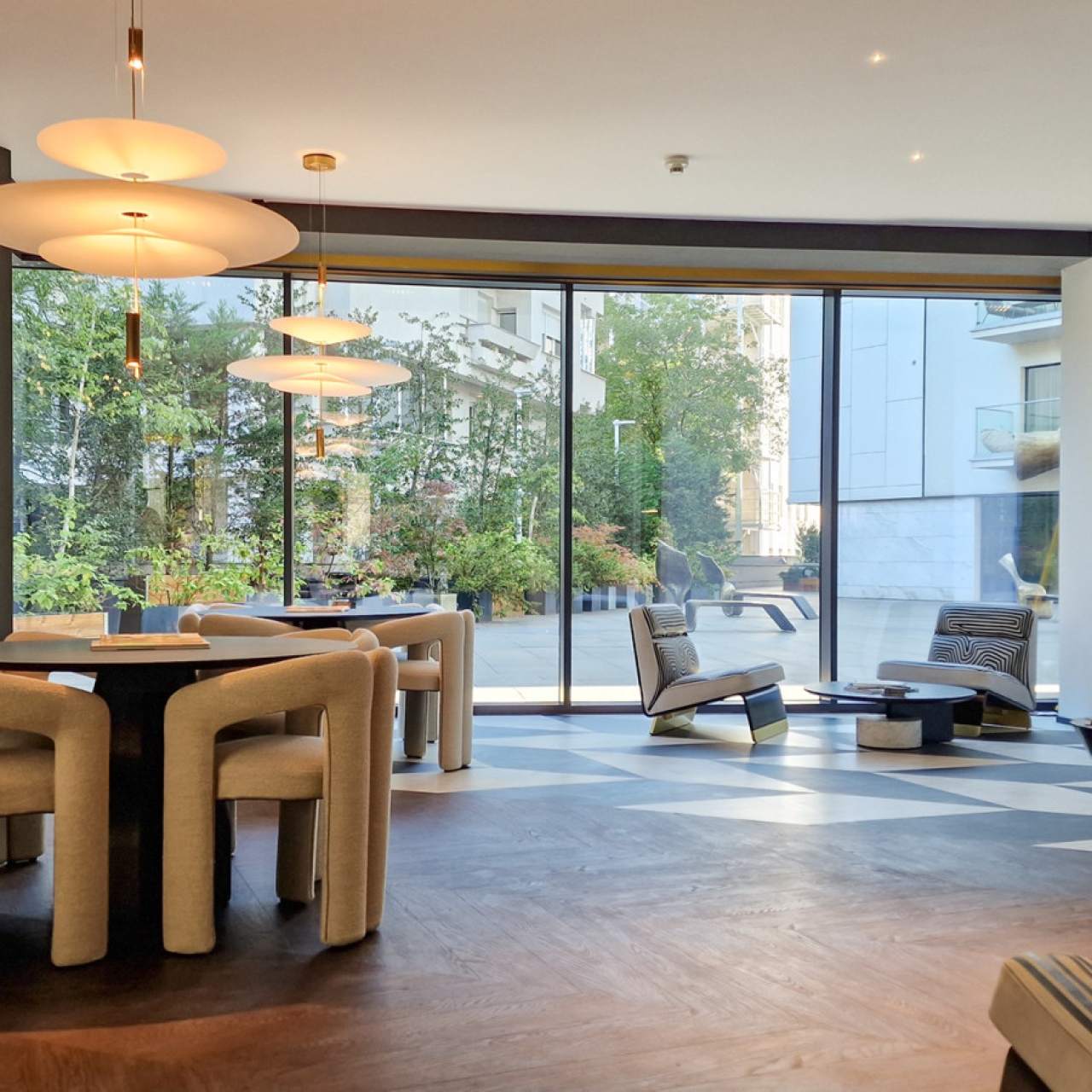
The most beautiful churches in Bucharest
Whether we refer to their spiritual or architectural value, religious places are a central element of the community, while also playing an important role in the history of Bucharest.
Here are some of the most beautiful churches you can find on the streets of the city.
Antim Monastery
Antim Monastery has a history of over three centuries, being one of the oldest churches in Bucharest. The construction began in 1713 and lasted two years and was founded by Antim Ivireanul, one of the most famous religious personalities in Romania. He is also responsible for the sketches according to which some decorations were designed, and even the carving of the massive oak door. Among the architectural elements that define it are the rosettes, the porch with columns, through which the passage to the monumental entrance is made, and the trefoil shape in which it was designed. The architecture is in line with the classic Brâncoveanu style, with Italian Baroque influences.
Stavropoleos Church
The Stavropoleos Church was built in one year, in 1724, with the contribution of the Greek-born Archimandrite Ioanichie Stratonikeas. Its architecture follows the Brâncoveanu style, rendered by ornamental motifs, the mural made both inside and outside, and the stone decorations used to beautify the place. In the past, an inn and several annexes functioned next to the church, but they were demolished at the end of the 19th century. Later, with a series of restoration works, a new annex was added, designed by the architect Ion Mincu in neo-Romanian style.
Domnița Bălașa Church
The plans of the church Domnița Bălașa, completed in 1885, bear the signature of the architects Carol Benesch and Alexandru Hristescu Orăscu. Built in the shape of a cross, in a combination of Neo-Romantic and Neo-Byzantine styles, a polygonal apse is added. The church is named after the daughter of ruler Constantin Brâncoveanu. A monument dedicated to her, made by the sculptor Karl Storck, was placed in the church garden. Impressive is also the white marble monument placed in the church, on a pedestal adorned with rosettes and columns, above her tomb, the work of sculptor Ion Georgescu. Inside, the neo-renaissance style painting was done by the Austrian painters Kott and Rihofsky, and the stained-glass windows were made in Germany. Both the church and the funerary monument are inscribed on the list of historical monuments of Bucharest.
Teiul Doamnei Ghika Church
Part of the Ghika-Tei ensemble, which also includes the Ghika Palace, the church of Teiul Doamnei Ghika was built in 1833 by ruler Gregory IV Ghica and his son Gregory. The church plans were designed by the Catalan architect Xavier Villacrosse, and the construction works were under the coordination of the craftsman Iosef Weltz. A distinctive note compared to other churches built at that time in Wallachia was the use of the Byzantine-Italian architectural style, this being, in fact, the only place of worship in the city with this architecture. Thus, the hemispherical dome, the tower with eight windows, the porch with columns in the Tuscan Doric style, and the semi-circular windows stand out. The interior of the church was painted by Alberto Giacometti, who also painted the royal palace, in oil, in Western neo-Byzantine style. The churchyard houses both the funerary monuments and the graves of Grigore Ghika and other members of his family, as well as other works made of marble and stone. The bell tower, built on two levels and dominated by a tower decorated with Ionic pilasters, is today a historical monument, next to the church.
Amzei Church
Built on a stone pedestal, between 1898 and 1901, Amzei Church bears the signature of the architect Alexandru Săvulescu, under whose wand other important buildings in the country were built, such as Peleș Castle in Sinaia and the National Museum of Romanian History. The architecture of the church is a combination of Art Nouveau, Neo-Romanian and Baroque styles, while the ornamentation is rich, worked in stone. The interior hides a series of Renaissance-style arches, several ornate stained-glass windows, and a painting by Umberto Marchetti.
Church of the Descent of the Holy Spirit
Architecturally atypical for Bucharest, the Maramureș-style church in the I.O.R. Park brings a touch of tradition to the middle of a neighbourhood dotted with rows of concrete blocks. It was built between 1994 and 1996, from fir beams and planks, reminiscent of the small church settlements scattered on the green lands in the North of the country. Another element specific to the Maramureș area is represented by a belt of icons painted on glass, placed on the exterior walls.
The Italian Church
Built on an ancient Lombard-style Greek cross plan used in northern Italy, the Italian Church was designed by architects Mario Stoppa and Giuseppe Tiraboschi. If on the outside there are several elements of Romanesque, Gothic, and Art Deco styles, the interior delights visitors with a series of paintings, mosaics, and stained glass, the church being a historical monument. On the bell tower, there is a clock without tongues, adorned with elements of astronomy, the only one in the city inscribed with both Roman and Arabic numerals.
Data for this article was obtained from agerpres.ro, crestinortodox.ro, metropotam.ro, parohiateiuldoamneighika.ro and wikipedia.org.
Inspired by the article?
Explore apartments in neighborhoods worth discovering:


